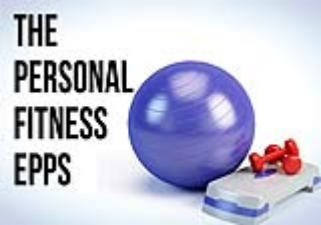Event Buzz: Personal Fitness 8/3/2015
An aging population and rising healthcare costs are driving consumers to take better care of themselves, and this is generating increased demand for personal fitness equipment so that people can get a workout in without the need for a gym, according to attendees of ECRM’s recent Personal Fitness event, held last month in Tampa, Fla.
“Not everyone can get to the gym as often as they’d like, and having such products readily available eliminates at least one excuse for not working out,” says Johanne Castagan, ECRM’s Marketing and Trade Relations Manager, who also happens to be a certified personal fitness trainer. “Even the shortest workout squeezed into a busy day is worth it, and all of the new home equipment makes that possible. And with so many new and unique items coming to the market, it’s easy to keep routines interesting, so people will stick to them.”
And while I’m no personal trainer, I’m an example of this aging personal fitness market. At 41, I was very overweight and always tired, and decided to embark on a strict diet and exercise regimen – most of it done at home with equipment such as an exercise bike, kettlebells, push-up bars, ab rollers, and resistance bands. Two years later and over 40 pounds lighter, I still continue to use these items at home, and always pack something in my luggage when I travel.
The beauty of these new personal fitness items is that you can find them not just at sporting goods stores, but in other mass retail locations, too.
Case-in-point: two weeks ago, Johanne and I toured Jack’s World, a value retailer based in New York (and regular ECRM event attendee) and picked up reaction balls – uniquely-shaped dense rubber balls that bounce in random directions and are great for developing your reflexes. And that was just one of dozens of pieces of personal fitness items available at Jack’s. Personal fitness products are now an impulse purchase!
During our Personal Fitness event, ECRMers sat down with buyers and sellers of personal fitness products to discuss trends, opportunities, and challenges in the category, and here are some key takeaways from those meetings:
- Fitness is extending to both edges of the age spectrum, from the very young to the very old, and it’s important to have products available to meet the specific needs of both. For kids, novelty and variety are important, as is fun, and safety is paramount. For older adults, tools for rehabilitation are important components of fitness.
- Education is very important in the fitness technology category – for the retail buyer as well as for consumers -- and is a great way for companies to differentiate themselves.
- Foam rollers are a relatively new but hot segment, as are items related to MMA, and anything yoga-related is still very popular.
- Wearables continues to grow, particularly anything that tracks fitness activities.
- Price-point and shelf space continue to be a challenge in grocery and drug. For these retail channels, smaller items like the plastic push up bars or resistance bands are more ideal, as they require less shelf space and have a lower price-point than more specialized items. Both of these retail channels, however, can help to move these items by including them as part of healthy-lifestyle marketing and merchandising programs.

